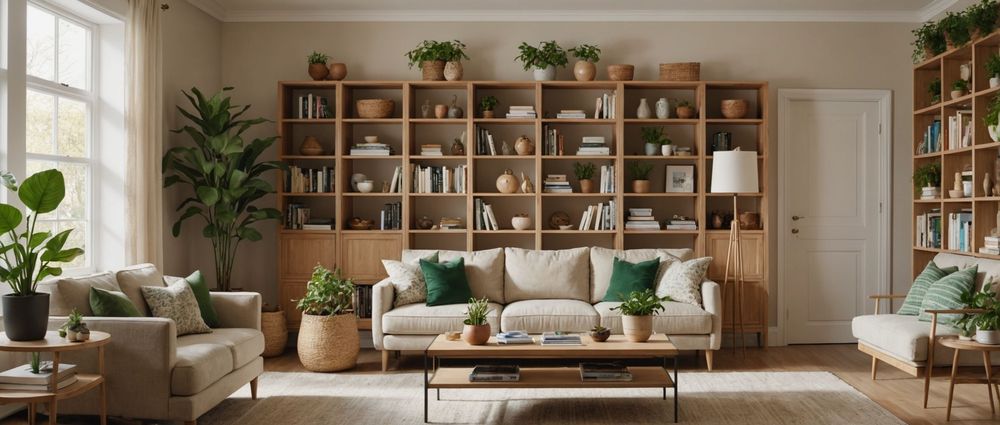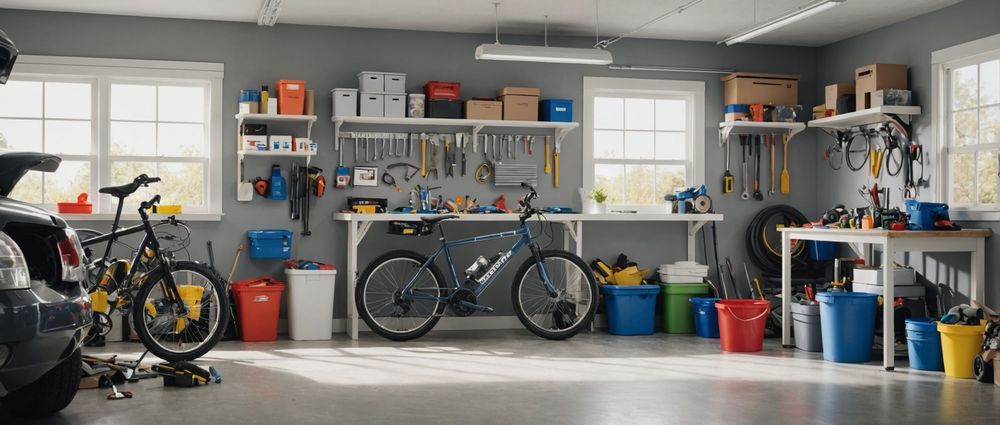Decluttering your home can often feel like a monumental task, but with the right approach, it can be accomplished without overwhelming yourself. The key is to break the process into manageable steps, focus on one area at a time, and maintain a positive mindset. This article will provide you with practical tips and strategies to declutter effectively while keeping stress levels at bay. By following these methods, you can create a more organized living space that promotes peace and functionality.
Start Small: The One-Item Rule

One effective way to tackle decluttering without feeling overwhelmed is to start small. The one-item rule is simple: each day, commit to removing at least one item from your home that you no longer need or use. This might include clothing, kitchen gadgets, or old magazines. By focusing on just one item, the task seems less daunting and allows for consistent progress. Here’s how to implement this method:
- Set a specific time each day for your decluttering activity.
- Choose an area of your home where you can easily identify items to remove.
- Decide on the fate of the item—will it be donated, thrown away, or sold?
- Document your progress to keep motivation high.
- Repeat this process daily or weekly until you see noticeable change.
Designate Decluttering Zones

Another strategy for decluttering without feeling overwhelmed is to designate specific zones in your home for decluttering activities. Rather than trying to declutter the entire house in one go, select a particular room or area to focus on. This way, you can concentrate your efforts and make substantial progress without scattering your focus. Here’s how to set up your decluttering zones:
- Choose a room that feels particularly cluttered and assign it as your “declutter zone.”
- Within this room, identify different areas (like closets, countertops, or drawers) as individual decluttering targets.
- Work on one area at a time, and take breaks between areas to avoid burnout.
- Notify household members about your decluttering campaign so they can support your efforts.
- Celebrate small victories as you clear each zone—this will keep your spirits high.
Set Clear Goals and Time Limits
Having clear goals will help you stay focused and motivated as you declutter your home. Setting specific and measurable goals can guide your efforts and make the task feel less overwhelming. Here are some tips for establishing effective goals and time limits:
- Identify what you want to achieve—for example, decluttering your living room or cleaning out your wardrobe.
- Set a timer for a fixed duration (like 30 minutes) to maintain a steady pace without fatigue.
- Break down larger goals into smaller, actionable tasks. For example, instead of decluttering an entire closet, focus on shoes one day and clothes the next.
- Create a checklist to track your progress, which can also serve as a source of motivation.
- Stay flexible—if you find a particular area requires more time, adjust your goals as needed.
Involve the Family
Decluttering can be a team effort, and involving family members can lighten the load and make it a fun activity. When everyone participates, it not only becomes less overwhelming but also fosters a sense of shared responsibility for maintaining a clutter-free home. Here are some strategies for involving your family in the decluttering process:
- Schedule a decluttering day where everyone tackles a space in the home.
- Set challenges or friendly competitions to see who can declutter the most items in a given time frame.
- Discuss the importance of decluttering and how it benefits everyone, which can help in gaining their buy-in.
- Provide each family member with their own box for decluttering; this personalizes the experience and encourages ownership.
- After a decluttering session, take time to celebrate your achievements as a family.
Finish Strong: Organize What Remains
Once you’ve successfully decluttered your spaces, it’s crucial to take the final step: organizing what remains. A well-organized home is less likely to become cluttered again, reinforcing your earlier efforts. Start by giving everything a designated place. Here’s how to finish strong:
- Sort items into categories—like keep, donate, and throw away—ensuring they are not mixed.
- Utilize storage solutions such as bins, shelves, or baskets to keep items organized.
- Label storage containers so everyone knows where things belong.
- Assess your organization system regularly and adjust as needed to accommodate seasonal changes.
- Maintain your decluttering habit; revisit your one-item rule to maintain an organized environment.
Conclusion
Decluttering your home doesn’t have to be a stressful ordeal. By adopting manageable approaches, such as starting small, setting clear goals, involving your family, and maintaining an organized space, you can declutter effectively without feeling overwhelmed. Remember, the key lies in taking one step at a time and celebrating your progress along the way. Your home will not only look better, but you’ll also create a more serene environment that fosters relaxation and productivity.
FAQs
1. How often should I declutter my home?
It’s beneficial to declutter regularly. A good rule of thumb is to revisit your spaces every six months and incorporate small daily decluttering habits.
2. What should I do with items I want to get rid of?
You can donate usable items to charities, sell them online, or recycle them if possible. For anything broken beyond repair, dispose of them responsibly.
3. How can I stay motivated during the decluttering process?
Set small, achievable goals, create a rewards system for yourself, or involve family and friends to make the process more enjoyable and less isolating.
4. Is it necessary to do all the decluttering in one day?
No, it’s not necessary. In fact, breaking it into smaller tasks can make the process manageable and significantly less overwhelming.
5. How do I deal with sentimental items while decluttering?
Be selective. Keep only the most meaningful pieces and consider taking photos of memorabilia before parting with them. This helps preserve memories without physical clutter.
